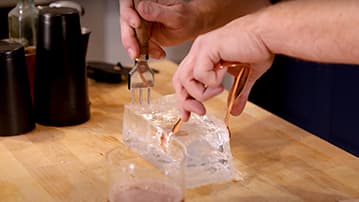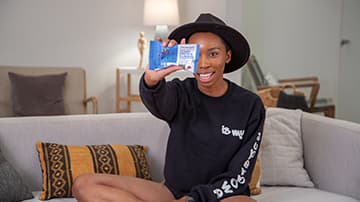Dog Training Tips For Beginners | The Desire Company
Dog Training Tips For Beginners
If you're a first-time dog owner, or if you're bringing a new dog into your home, it's important to be prepared for the training process. Dogs are smart creatures and with proper training, they can be well-behaved members of your family. Let’s be honest, they’ll probably also be the most popular member of your family, too. In this post, we will discuss some top tips for training your dog and introducing them to a new home. We'll also provide some helpful videos that you can use as you embark on this journey!
Step One: Tell Your Dog How Much You Love Them
This isn't exactly standard dog training, but it's a good habit to get into. Pet them, say nice things to them, take a few pics for Instagram, and maybe give 'em a squeeze. If you're new to dog ownership or if you've had dogs before but they weren't very well trained, now's your chance to get off on the right foot with your new best friend.
Mendota Slip Leash Review with Dog Trainer Rachel Sample
Step Two: Give Them Time and Space
When you bring your dog home, you'll want to keep them in a confined area with their crate in it. This should be a small space at first, because a whole house with all of its new smells and new people and new rooms is a lot to take in all at once. A small space is also good for you because it'll help you keep track of where your pup is at all times. That's handy, too, because you'll want to be able to control when (and where!) they go to the bathroom.
Kong Review with Dog Trainer Rachel Sample
Step Three: Did We Mention the Crate?
Crate training is a hugely important part of a dog's acclimation to its new home. It's a way of establishing yourself as the pack leader, and it also helps keep your dog safe when you're not around. With patience and consistency, crate training will help them feel comfortable in their new surroundings. For real though, dogs love their crates. Help them get used to it by feeding them there, giving them toys to play with, that kind of thing.
You don't ever want the crate to be a punishment, but if they whine or bark to be let out, that's when you absolutely should not give in! Dogs love consistency and routine, and they respond extremely well to any kind of reinforcement. When you give in, your dog is training YOU! That's not good for anybody.
Step Four: Start a Routine and STICK TO IT
This gets its own bullet because it's so vitally important and we can't mention it enough. For instance, feed your dog on a schedule and do not waver, even if they act like they're starving and you never give them any food and you're a terrible human. They're not starving, they're just trying to train you to give them their food when THEY want it. That's not how it works, pup!
If you do this with frequent enough bathroom breaks, too, then you won't have to stand around with a leash while your dog decides to go. You'll establish a routine, and dogs LOVE those. You'll be amazed by how reliable a dog can be with a schedule.
Step Five: Will Work for Food
Do you know what else dogs love to do? Work! Make a dog earn every single morsel of food you give it, especially in the early days. This will help them learn that you're the one in charge and that they need to listen to you if they want to eat. This also orients them to the concept of rewards and that if they listen to your commands, they get their second most favorite thing in the world--food! After all, their favorite thing is you!
Step Six: Start with Basic Commands
Once your dog is comfortable in their new home, it's time for basic obedience commands. Sit, stay, come, heel--these are all essential for a dog that's going to be living in your house. There's no need to rush into this; start with one or two commands and work your way up as your dog masters them.
Step Seven: Use Positive Reinforcement
Dogs love praise just as much (if not more) than they love food. When your dog does something good, make sure to praise them! Not only does this help reinforce the behavior you want, but it also makes your dog happy. And we all know that a happy dog is a good dog!
Step Eight: Potty Training Doesn't Just Happen, But Accidents Do
Cats instinctively go to the bathroom in sand. You don't really even have to train it. Dogs are not like this, but don't worry--you can help them learn where to go. For potty training, take your dog out to the designated spot(s) once every 1 to 3 hours. Accidents happen, and it's really important to NEVER rub your dog's nose in their poop or potty. The best overall tip for training your dog is to IGNORE the stuff you don't want them to do and GRATUITOUSLY PRAISE the stuff you want them to do. This is especially true for potty training. If that means yelling and whooping and petting and feeding morsels to your dog in the yard for a successful deposit, then go for it. Don't be embarrassed.
Now it's time for some slightly more advanced techniques (and we do mean SLIGHTLY). Remember, dogs love to work. It might be a pointless trick to you (turn around in a circle, shake, etc.) but to the dog it's EVERYTHING. You're happy, they’re happy.
How-To: Train Your Dog to Stay
To your dog, everything they learn from you is important. They want to please you, after all. But if there is one absolutely most important thing for a dog to learn, it's to stay. A dog that stays when you tell them to, every time, is a safe and controlled dog. Start with your dog in a standing position. Hold a treat close to their nose and say "stay." Praise them when they remain still and give them the treat. Gradually increase the time they must stay still for before receiving the treat.
In the video How-To Teach Your Dog the Stay Command, she goes over this process but also the "rock back and forth" that really helps the dog learn that they're supposed to stay in one place and not move. You're not training them to come to you, you're training them to stay put!
How-To: Train Your Dog to Do a Friendly Greeting
When you bring your dog home, one of the first (or second, after training them to stay) things you'll want to train them to do is a friendly greeting. This means that they will stay calm and not jump on or bark at people when they come over. Check out dog trainer Rachel Sample's How-To Teach Your Dog a Friendly Greeting.
Start by having your dog sit or lie down next to you when someone comes into the room. Reward them with treats and petting when they do this. As they get better at it, have them stay in the sit or down position until the person has left the room. Remember to always reward them for good behavior!
How-To: Train Your Dog to Walk on a Loose Leash
Have you ever seen a dog walk a person instead of the other way around? You probably see it all the time, because a dog that isn't leash trained will pull their walker everywhere THEY want to go, regardless of the plans of the walker. That's not how it works, pup!
As Rachel Sample teaches us in this video How-To Teach Your Dog Loose Leash Walking, training a dog to walk on a loose leash is really just training a dog to go where YOU want, without pulling on a leash and even potentially hurting themselves.
Rachel Sample walks you through these steps (and more!) in her video Dog Training Basics for Beginners.
Maybe watching her videos with the Desire Company should have been your first step, but it’s okay–now that you’ve mastered all these training techniques, you can take a look at everything else The Desire Company has to offer.







